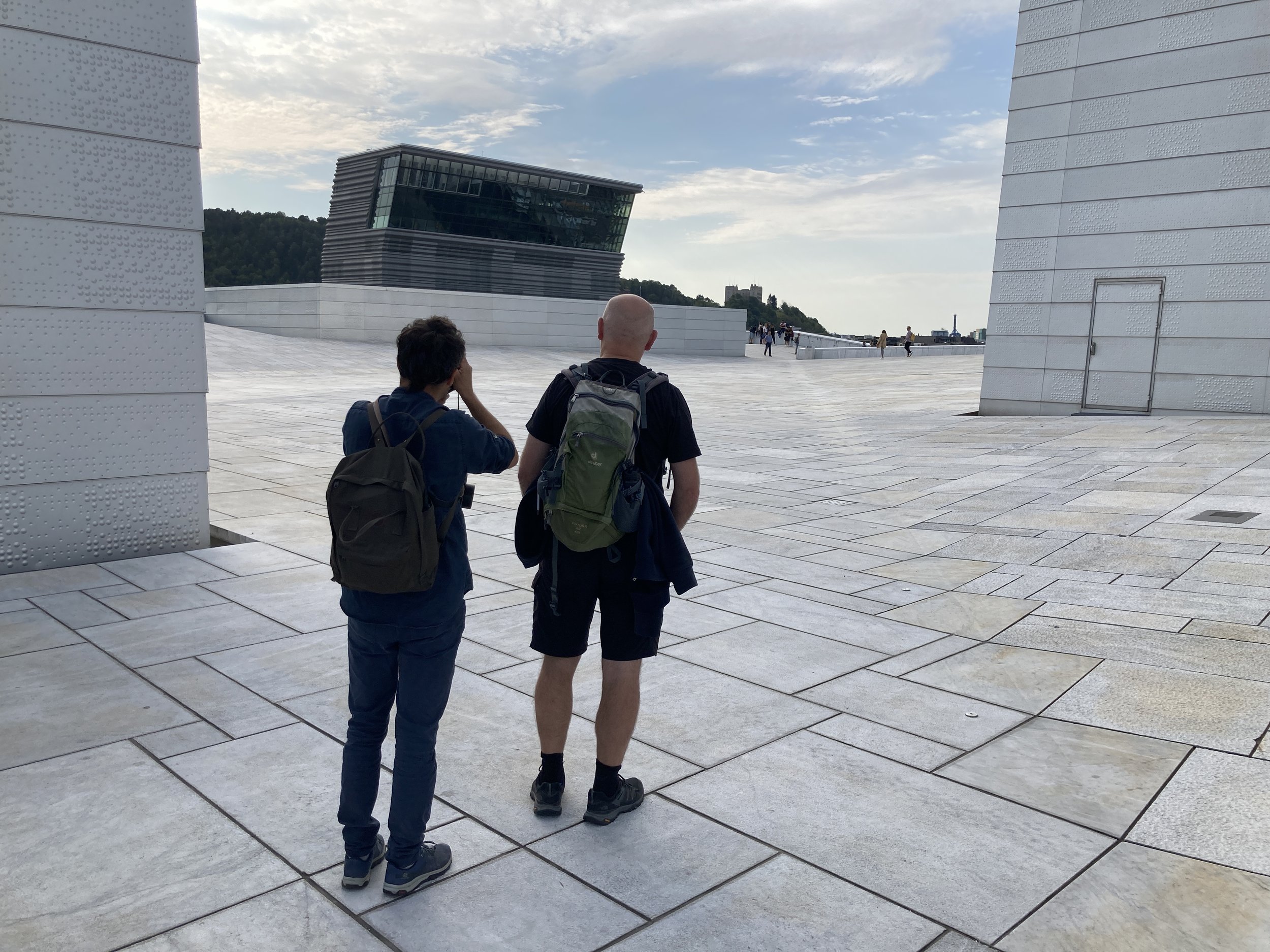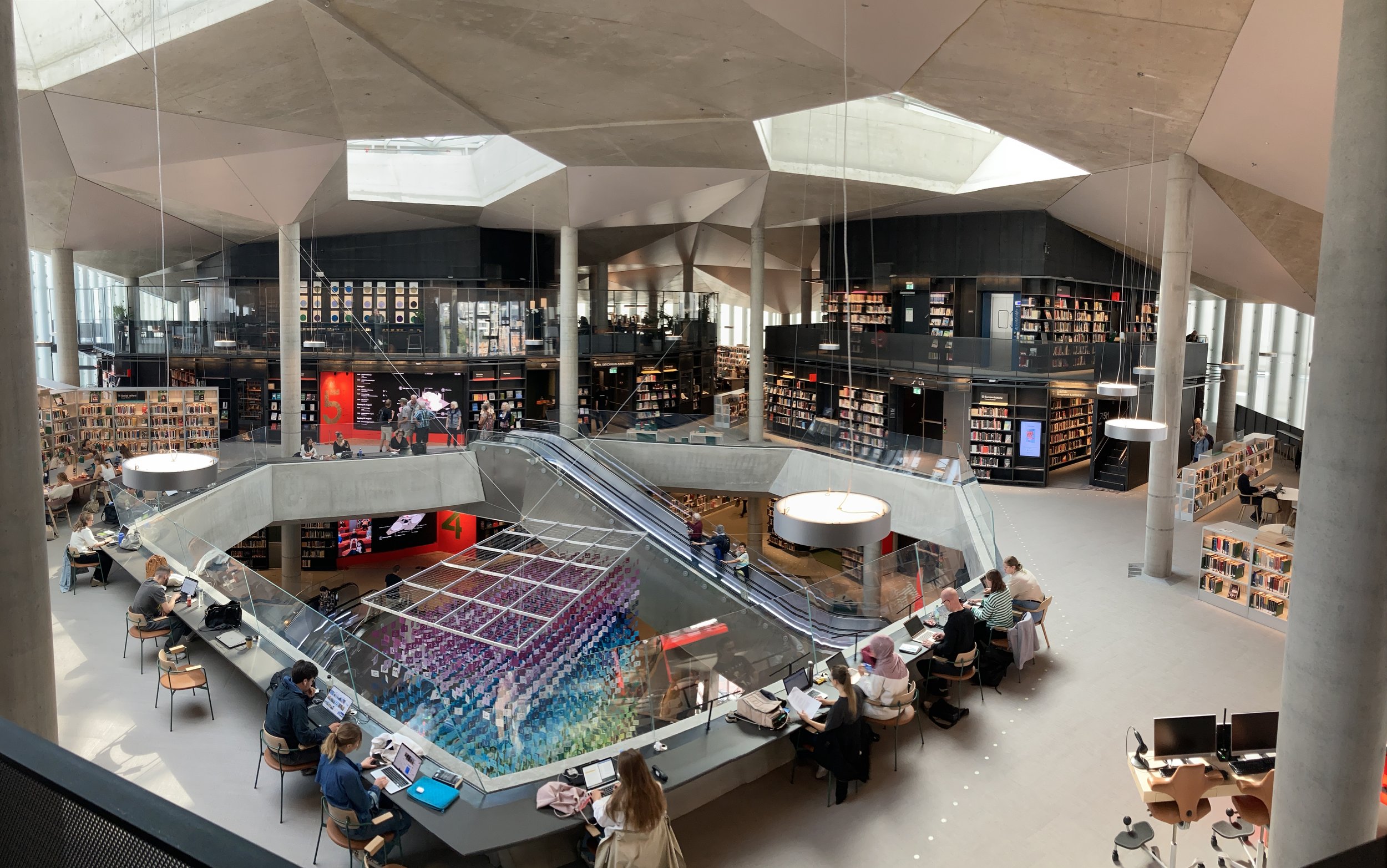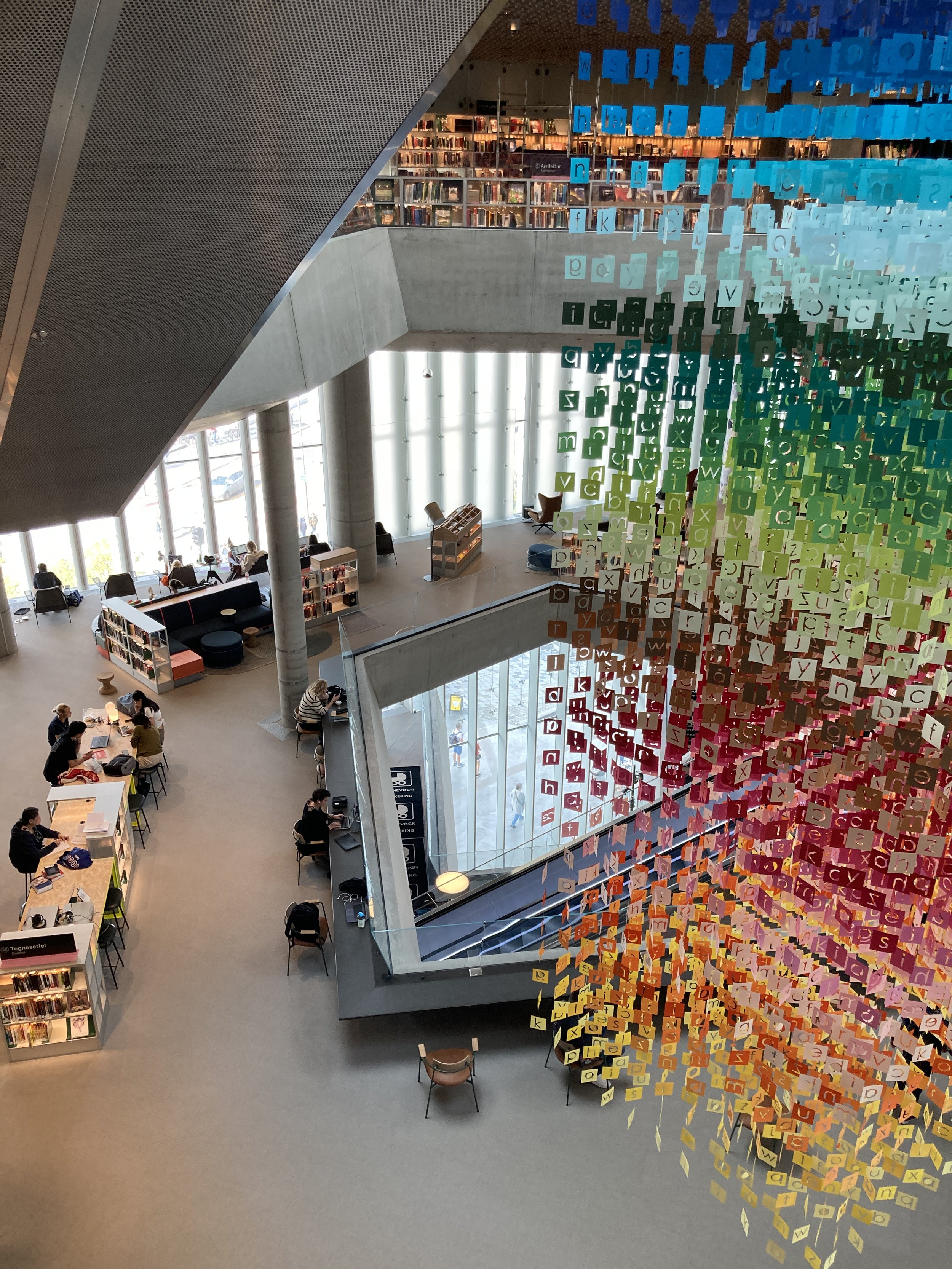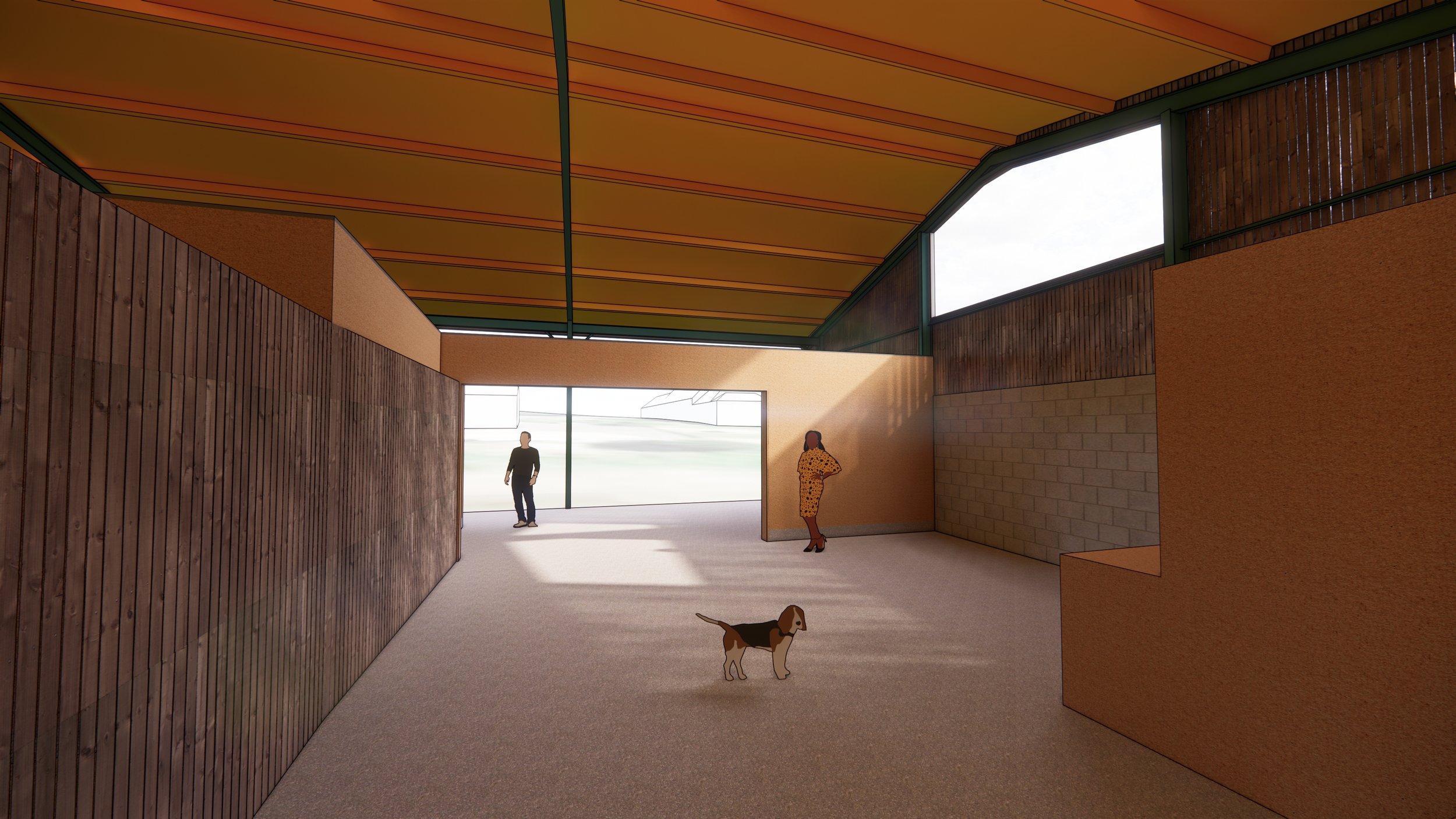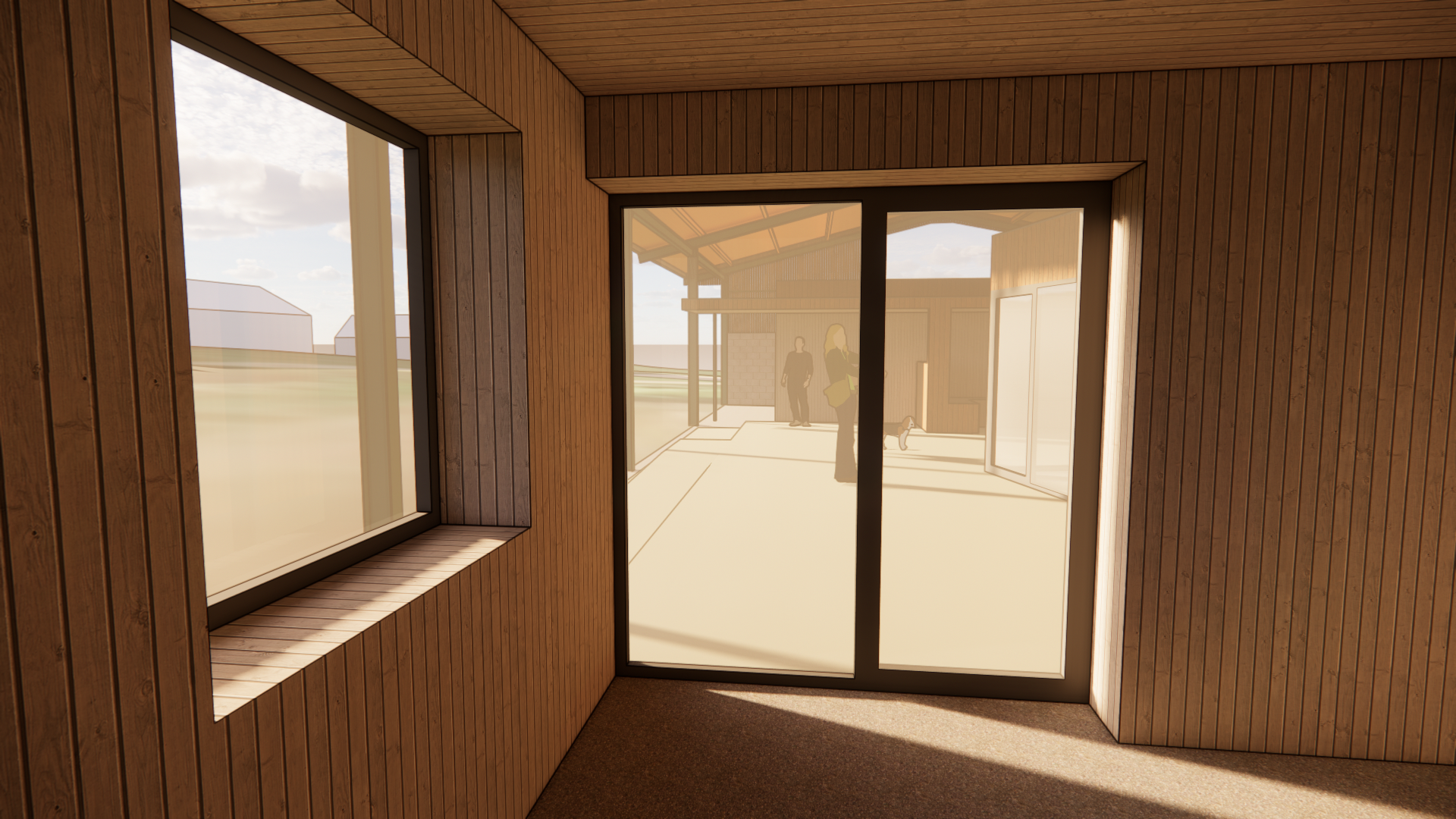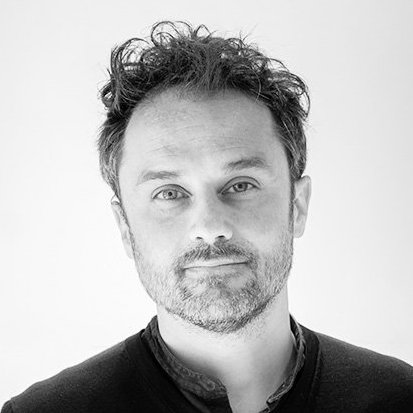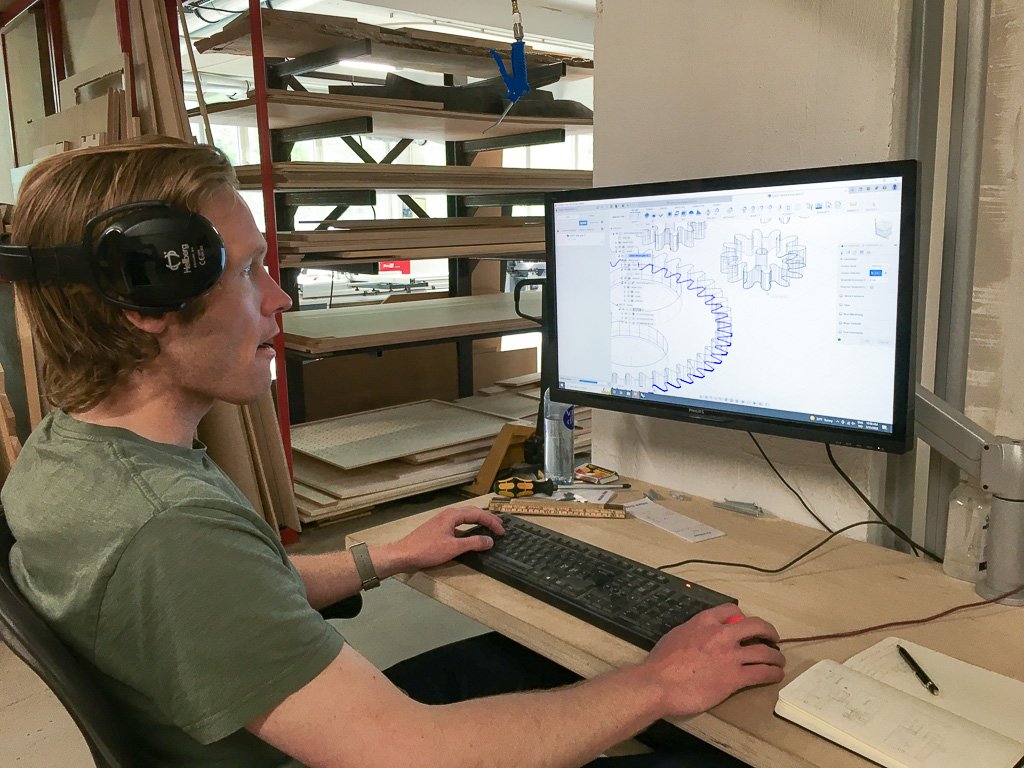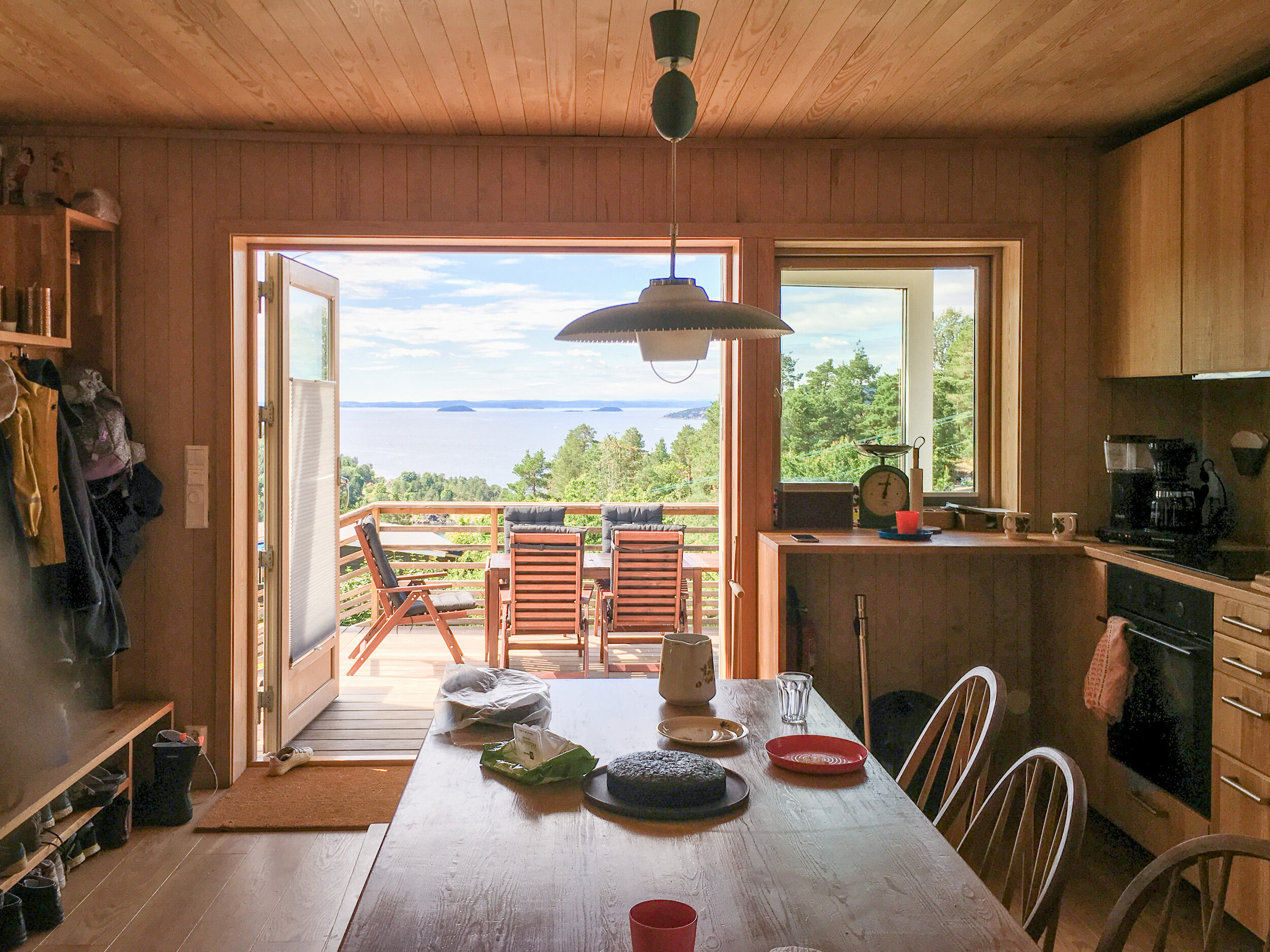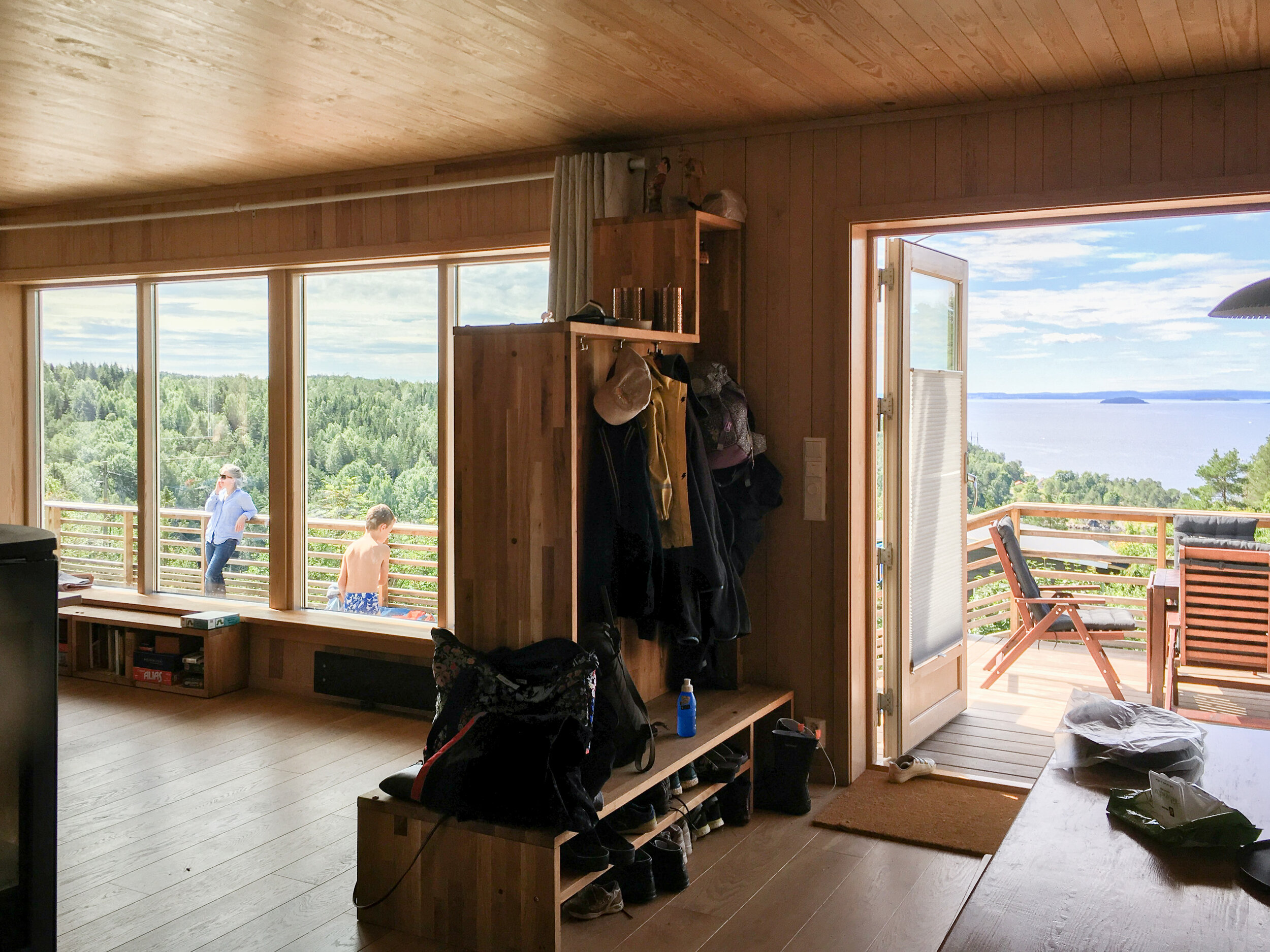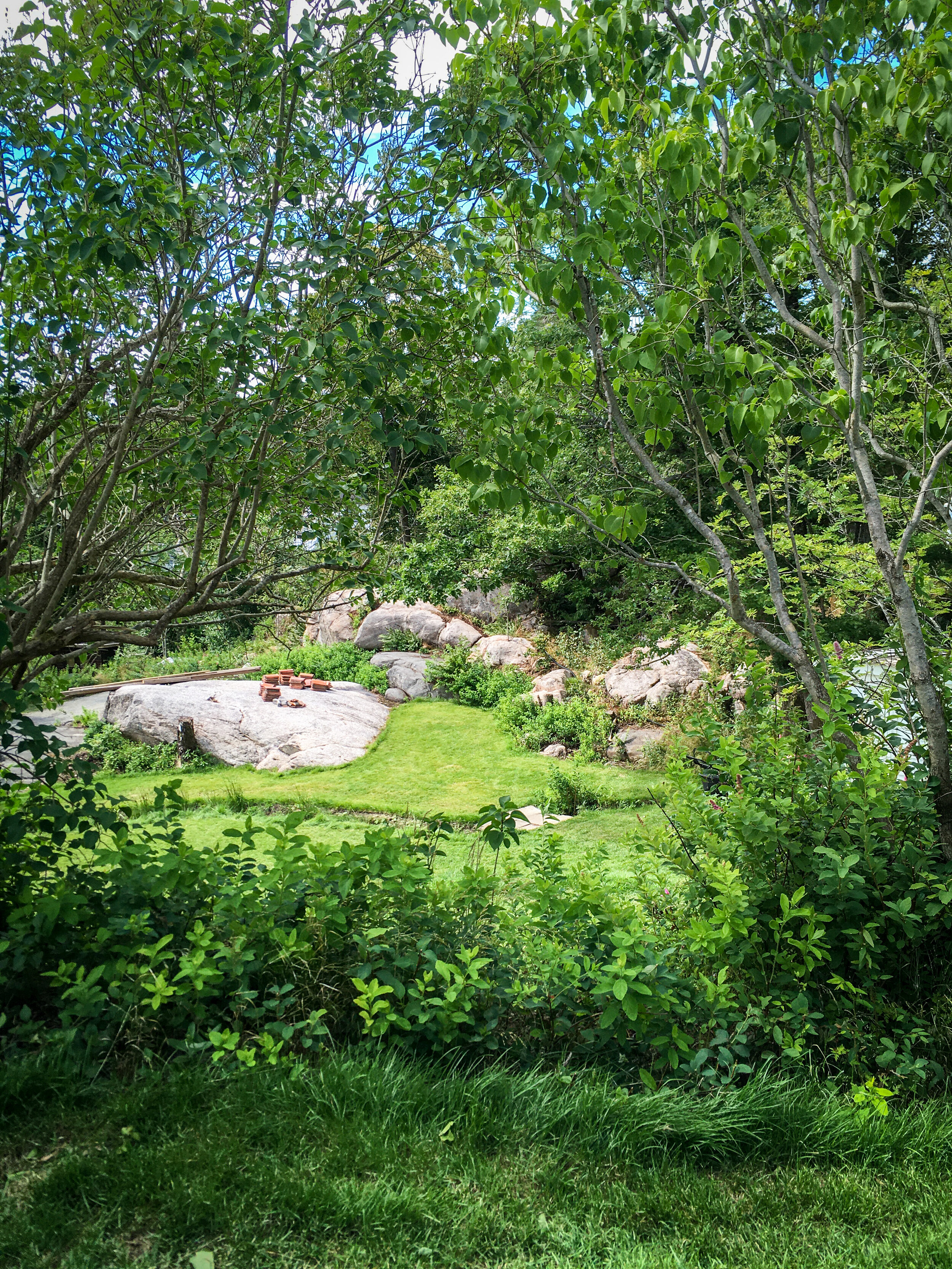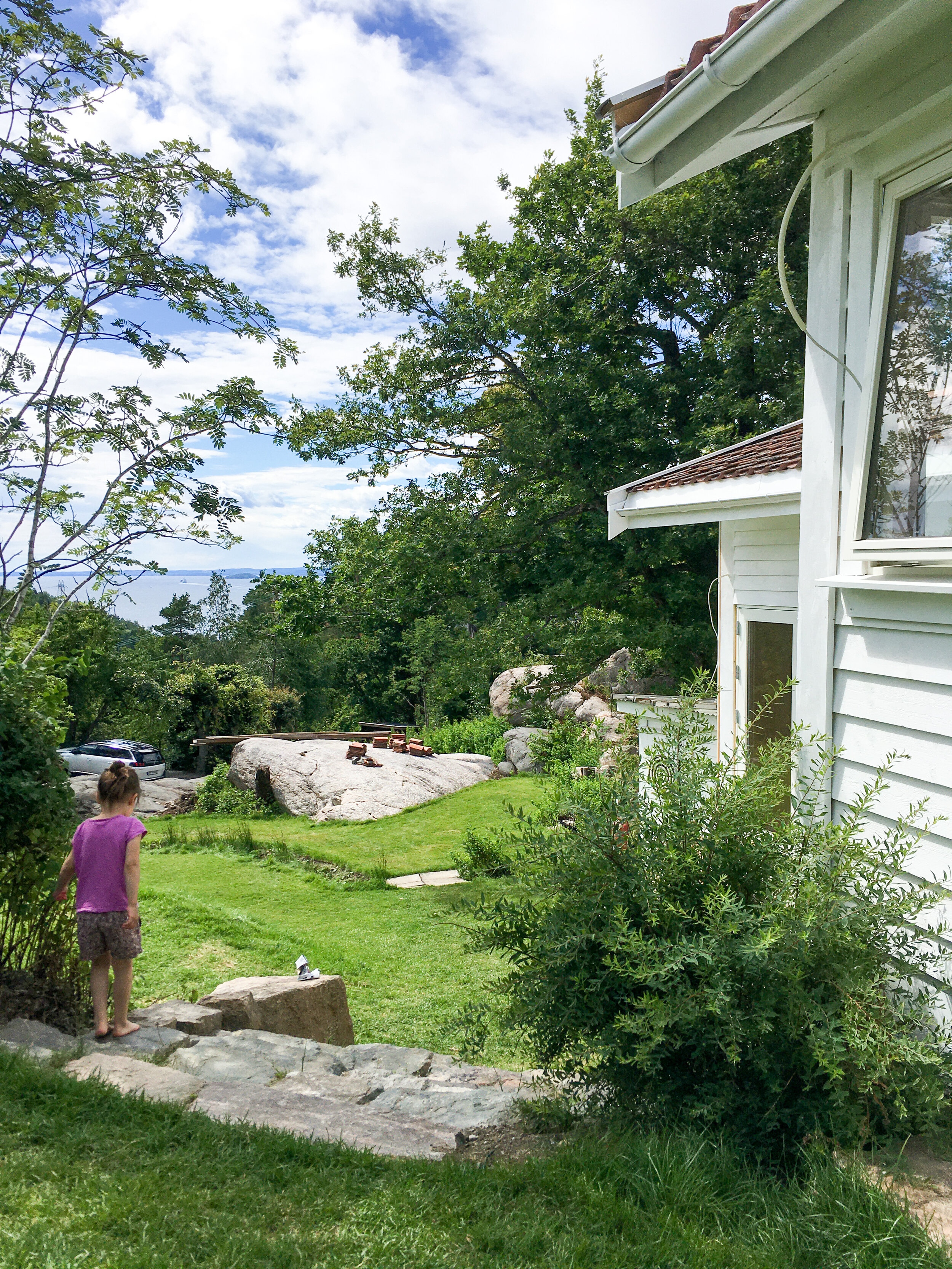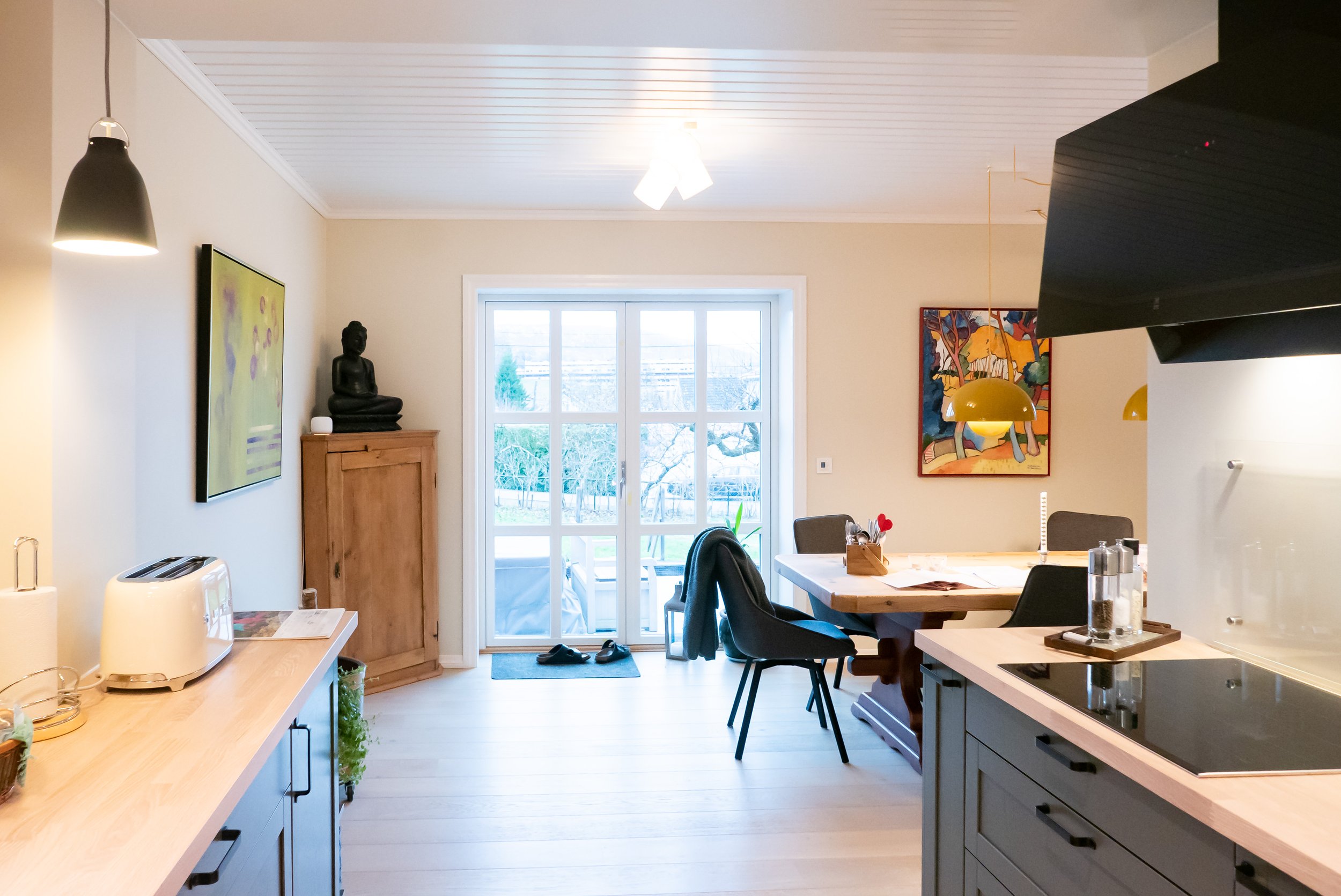The UK office of 2hD took a short trip to Oslo this month to study some of the city’s new building projects as fresh inspiration for our own practice. We teamed up with Simon of Simon Middlecote Architects — a long term collaborator, both in teaching at NTU and more recently on the Care Leavers’ Accommodation project (more on this to follow).
Some highlights included the Oslo Public Library by Atelier Oslo and Lundhagem Arkitekter. This huge building somehow feels inviting and warm, and people really seem to feel they belong there. The top-lit atrium connects spaces into a seamless experience without dominating the small scale and intimate areas that surround it. Facilities that we couldn’t dream of having in a public library in Nottingham, such as 3D printers and makers’ spaces with sewing machines and large format printers support locals to be creative. The books meanwhile are everywhere — within touch as you journey around the building but the shelving never dominates.
The overall impression is that you are likely to find interesting books by chance, whilst a digital navigation system guides you when you are looking for something in particular.
On Simon’s suggestion, we took a ferry across the harbour to visit the Norsk Folkemuseum and its collection of timber historic buildings salvaged from around the country. It was a great counterpoint to the fast-paced development around the harbour. Beautifully crafted and functional farmsteads, churches and civic buildings gave a sense of a more peaceful time, but also a reminder of the rapid development the country has undergone since the exploitation of its oil resources began.
Oslo is a unique mix of fjord-side port, with thriving, dynamic urban communities and peaceful suburbs enveloped by well-used and highly valued areas of natural environment.
Whilst not without its problems, there is a lot we can learn from the city about making workable, humane and happy urban places.






